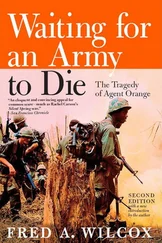“That is very clumsy,” she said slowly.
Dawnay came and stood by her other side. “Cyclops in the other room can input direct by that co-axial cable.”
“Is that what you wish me to do?”
“We want to find out,” said Geers.
The girl looked up and found Fleming staring at her. She had not taken him in before, and gazed back expressionlessly at him.
“Who is that?”
“Doctor Fleming,” said Dawnay. “He designed the computer.”
The girl walked stiffly across to him and held out her hand.
“How do you do?” She spoke as if repeating a lesson.
Fleming ignored her hand and continued staring at her. She looked unblinkingly back at him and, after a minute, dropped her arm.
“You must be a clever man,” she said flatly.
Fleming laughed. “Why do you do that?”
“What?”
“Laugh—that is the word?”
Fleming shrugged. “People laugh when they’re happy and cry when they’re sad. Sometimes we laugh when we’re unhappy.”
“Why?” She went on gazing at his face. “What is happy or sad?”
“They’re feelings.”
“I do not feel them.”
“No. You wouldn’t.”
“Why do you have them?”
“Because we’re imperfect.” Fleming returned her stare as though it were a challenge.
Geers fidgeted impatiently.
“Is it working all right, Fleming? There’s nothing on the display panel.”
“Which is the display panel?” she asked, turning away.
Geers showed her and she stood looking at the rows of unlit bulbs while Geers and Dawnay explained it, and the use of the terminals, to her.
“We’d like you to stand between them,” he said.
She walked deliberately towards the panel, and as she approached it the lamps started to blink. She stopped.
“It’s all right,” said Dawnay.
Geers took the guards from the terminals and urged the girl forward, while Fleming watched, tense, without saying anything. She went reluctantly, her face strained and set. When she reached the panel, she stood there, a terminal a few inches from each side of her head, and the lights began flashing faster. The room was full of the hum of the computer’s equipment. Slowly, without being told, she put her hands up towards the plates.
“You’re sure it’s neutralised?” Geers looked anxiously at Fleming.
“It neutralises itself.”
As the girl’s hands touched the metal plates, she shivered. She stood with her face blank, as if entranced, and then she let go and swayed back unsteadily. Dawnay and Geers caught her and helped her to a chair.
“Is she all right?” asked Geers.
Dawnay nodded. “But look at that!”
The lights on the panel were all jammed solidly on and the computer hum grew louder than it had been before.
“What’s happened?”
“It speaks to me,” said the girl. “It knows about me.”
“What does it say?” asked Dawnay. “What does it know about you? How does it speak?”
“We... we communicate.”
Geers looked uncomfortably puzzled. “In figures?”
“You could express it in figures,” she said, staring blindly before her. “It would take a very long time to explain.”
“And can you communicate—?” Dawnay was interrupted by a loud explosion from the next room. The display panel went blank, the hum stopped.
“Whatever’s happened?” asked Geers.
Fleming turned without answering him and went quickly through to the first lab bay, where the creature and its tank were housed. Smoke was rising from the contact wires above the tank. When he pulled them out, the ends were blackened and lumps of charred tissue hung from them. He looked into the tank, and his mouth set into a thin line.
“What’s happened to it?” Dawnay hurried in, followed by Geers.
“It’s been electrocuted.” Fleming dangled the harness in front of her. “There’s been another blow-out and it’s been killed.”
Geers peered into the tank and recoiled in distaste.
“What did you do to the controls?” he demanded.
Fleming threw down the charred remains of the wires. “I did nothing. The computer knows how to adjust its own voltages—it knows how to burn tissue—it knows how to kill.”
“But why?” asked Geers.
They all looked, by instinct, to the doorway from the computer-room. The girl was standing there.
“Because it was her .” Fleming walked across to her grimly, his jaw stuck out. “You’ve just told it, haven’t you? It knows it has a better slave now. It doesn’t need that poor creature any more. That’s what it said, isn’t it?”
She looked levelly back at him. “Yes.”
“You see!” He swung round to Geers. “You’ve got a killer. Bridger may have been an accident; so may Christine, though I’d call it manslaughter. But this was pure, deliberate murder.”
“It was only a primitive creature,” said Geers.
“And it was redundant!” He turned back to the girl. “Yes?”
“It was in the way,” she answered.
“And the next time it could be you who are in the way—or me, or any or all of us!”
She still showed no flicker of expression. “We were only eliminating unwanted material.”
“We?”
“The computer and myself.” She touched her fingers to her head.
Fleming screwed up his eyes.
“You’re the same, aren’t you? A shared intelligence.”
“Yes,” she said tonelessly. “I understand—”
“Then understand this!” Fleming’s voice rose with excitement and he pushed his face close up to her. “This is a piece of information: it is wrong to murder!”
“Wrong? What is ‘wrong’?”
“ You were talking about killing earlier on,” said Geers.
“Oh God!” said Fleming wildly. “Is there no sane person anywhere?”
He stared for a moment more at Andromeda, and then he went, half-running, out of the room.
Bouldershaw Fell looked much as it had done when Reinhart first took Judy to see it. Grass and heather had grown over the builders’ scars on the surrounding moor, and black streaks ran down the walls of the buildings where gutters had overflowed in winter storms; but the triple arch was still poised motionless over its great bowl, and inside the main observatory block the equipment and staff continued their quiet, methodical work. Harvey was still in charge of the control desk, the banks of steering and calculating equipment still stood to each side of him, flanking the wide window, and the photographs of stars still hung on the walls, though less fresh and new than they had been.
The only sign of the grim business that preoccupied them all was a huge glazed wall-map of the world on which the tracks of orbital missiles were marked in chinagraph. It betrayed what the outward calm of the place concealed—the anguish and fever with which they watched the threats in the sky above them remorselessly grow and grow. Reinhart referred to it as the Writing on the Wall, and worked day and night with the observatory team, plotting each new trace as it swung into orbit and sending increasingly urgent and sombre reports to Whitehall.
Nearly a hundred of the sinister, unidentified missiles had been tracked during the past months, and their launching area had been defined to within a triangle several hundred miles in extent in the ocean between Manchuria, Vladivostok and the northern island of Japan. None of the neighbouring countries admitted to them. As Vandenberg said, they could belong to any of three of our fellow-members of the United Nations.
Vandenberg paid frequent visits to the telescope and had long and fruitless conferences with Reinhart. All they could really tell from their findings was that these were propelled vehicles launched from about forty degrees north by between a hundred and thirty and a hundred and fifty east, and that they travelled across Russia, Western Europe and the British Isles at a speed of about sixteen thousand miles an hour at a height between three hundred and fifty and four hundred miles. After crossing Britain they mostly passed over the North Atlantic and Greenland and the polar north of Canada, presumably joining up their trajectory in the same area of the North China Sea. Whatever route they took, they were deflected to pass over England or Scotland: they were obviously steerable and obviously aimed very deliberately at this small target. Although nothing certain was known of their size or shape, they emitted a tracking signal and they were clearly large enough to carry a nuclear charge.
Читать дальше












